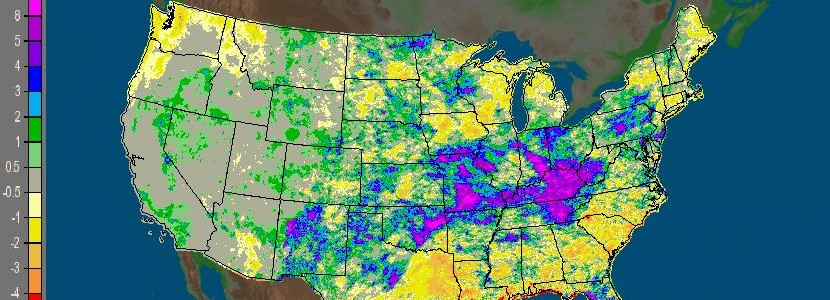Drought
-

The State Climate Office of North Carolina has a blog on a variety of topics related to climate in the Southeast. Today’s entry describes some research that their students are doing on the measurement of drought. One of the new products under development is a Standardized Precipitation Evapotranspiration Index (SPEI) which will include the impacts…
-

The latest Drought Monitor was released this morning and shows a general increase in dry conditions across the region. Drought increased from 18 to 23 percent of the region, while abnormally dry conditions (which include the drought areas) increased from 43 to 53 percent. The small area of extreme drought in south central Georgia was…
-

The latest Drought Monitor was released this morning and shows that the extreme drought in southern Florida decreased in area due to recent rain. However, North Carolina developed an area of severe drought and is undergoing water restrictions in some places. Abnormally dry conditions also expanded to cover most of South Carolina. You can read…
-

California is not the only place on earth currently experiencing drought conditions. This recent post on the Weather Underground blog describes some of the droughts that are occurring in other countries: https://www.wunderground.com/news/california-historic-drought-world-brazil-africa-korea?cm_ven=FB_NEWS_AS_072815_3. Market analysts look at these droughts to help predict future prices of commodities like soybeans that can affect prices for farmers in the…
-

The latest NWS 30-day precipitation maps from https://water.weather.gov/precip show how wet California has been this year compared to normal. The two maps below show the departure from normal and the percent of normal since June 26, 2015. While the Southeast has been slightly below normal during that time period, California has received 1-2 inches of…
-

Wildfire season in the Pacific Northwest has entered its high season, and is expected to be worse than usual due to the continuing drought conditions in the region. Here are a few stories about the current season and the terrifying season that Alaska is experiencing this year. Cliff Mass of the University of Washington posted…
-

Each week on Thursday morning the National Drought Monitor is updated to reflect the latest drought conditions across the US. You can find a comparison from one week to the next at https://droughtmonitor.unl.edu/MapsAndData/WeeklyComparison.aspx. But do you know what the different drought categories mean? The CoCoRaHS group has put together a neat animated YouTube video which explains…